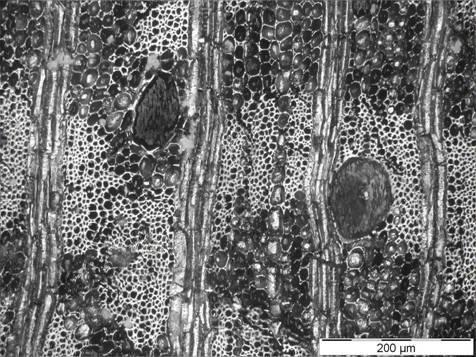Projecten
WoodPALEO
Wood biology for paleo-ecology
Fire is a major origin of forest disturbance. It can have a natural cause or it can be anthropogenic. Also some degree of interference between these two causes is very likely, for instance when people occupy new land on naturally burnt forest. Forest fires leave behind big quantities of charcoal. Sometimes this charcoal forms layers in the soil profile with each layer corresponding to a particular fire event. Interesting is that charcoal conserves largely the original wood anatomical structure: the original tissues and cells can still be observed microscopically notwithstanding that all the organic molecules are turned into inorganic carbon. Wood and charcoal can be identified through the observation of anatomical features and the subsequent comparison with scientific reference collections. This offers an unique opportunity to reconstruct the floristic composition of the burnt forest, certainly in combination with radiocarbon dating of the material: dates and species assemblages of soil charcoal layers archive the forest fire history of a certain site.
In collaboration with partner institutes, we sampled soil charcoal within the Central African rainforests in Gabon, Cameroon, the Republic of the Congo and in the Democratic Republic of the Congo, among others in the Mayombe forest, the Salonga National Park and in the Kisangani region. There were charcoal layers in almost all of the soil pits, suggesting that forest fires occurred all over during the last ten thousand years and that the Central-African rainforest is not an invariable landscape. Radiocarbon dating of the charcoal fragments put forward three distinct eras of fire events: (1) 7800-6800 BP, (2) 2300-1500 BP and (3) 800 BP- present time. These fire occurrences coincide or lag behind the well documented Holocene droughts (the 8.2 ka event, the 3rd millennium rainforest crisis and the Medieval Climate Anomaly). Probably these Holocene droughts were followed by a degraded and fragmented vegetation that is particularly fire prone. The floristic composition, deduced from identification of charcoal fragments, of the burnt vegetation showed a higher proportion of pioneer and savanna species the last eight centuries, probably caused by more frequent drought events and perhaps anthropogenic disturbances.
